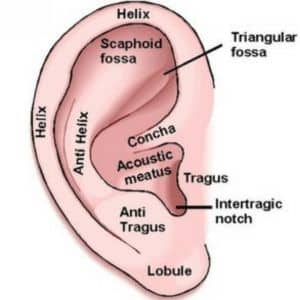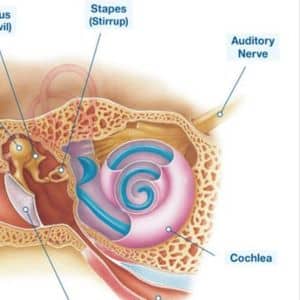Hearing – How the Ear Works
Understanding Normal Ear Function
Hearing is a critical sense that connects us to the world, enabling us to respond to alarms, engage in conversations, and process countless sounds throughout the day. The auditory system is a complex network that relies on various components working together seamlessly. Here’s how normal ear function works:
How the Auditory System Processes Sound
Sound Waves Enter the Outer Ear
- Sound waves from the environment travel through the air and are collected by the outer ear.
- These waves move down the ear canalto the eardrum.
Vibrations in the Middle Ear
- The eardrum (tympanic membrane)vibrates in response to sound waves.
- These vibrations set the three tiny bones (ossicles)in the middle ear into motion.
Movement in the Inner Ear
- The motion of the ossicles causes fluid within the cochlea(a part of the inner ear) to move.
- This movement bends hair cellsinside the cochlea, which convert mechanical vibrations into electrical impulses.
Electrical Signals Sent to the Brain
- The electrical impulses are transmitted via the auditory nerveto the brain.
- The brain interprets these signals as sound, allowing us to perceive and understand the world around us.

The Outer Ear
Pinna (Auricle): The visible part of the ear collects sound and amplifies frequencies in the 2000-3000 Hz range, crucial for understanding speech consonants.
Ear Canal (External Auditory Meatus): A highly vascularized area lined with skin and hair, it produces earwax (cerumen), which protects against bacteria and moisture. While earwax is normal, it can cause issues if it completely blocks the canal.

The Middle Ear
Eardrum (Tympanic Membrane): A thin, three-layered membrane that vibrates in response to sound waves, separating the outer and middle ear.
Ossicles:
Malleus (Hammer), Incus (Anvil), and Stapes (Stirrup) form a chain that amplifies vibrations and transmits them to the inner ear.
Eustachian Tube: Balances air pressure in the middle ear. It opens during swallowing, yawning, or chewing, often causing a soft popping sound.

The Inner Ear
Cochlea: The cochlea is the hearing organ, a fluid-filled, snail-shaped structure that converts mechanical vibrations into electrical signals.
Inside the cochlea, hair cells bend in response to fluid movement, triggering electrical impulses that travel via the auditory nerve to the brain.
The cochlea processes sounds across a frequency range from 20 Hz (low pitch) to 20,000 Hz (high pitch), much like a piano.
Semicircular Canals: Though not involved in hearing, these structures play a key role in maintaining balance.
Why Normal Ear Function Matters
The intricate process of hearing depends on the coordination of the outer, middle, and inner ear. Each component plays a crucial role in collecting, transmitting, and interpreting sound. When any part of this system is compromised, it can affect your ability to hear and process sound.
Understanding how the ear works underscores the importance of protecting your hearing and addressing any concerns promptly with a hearing healthcare professional.
